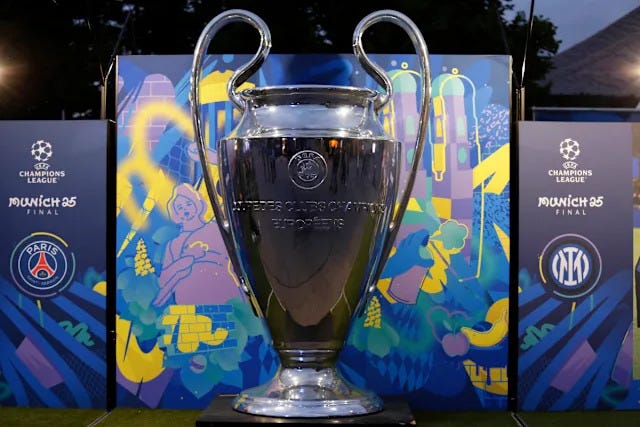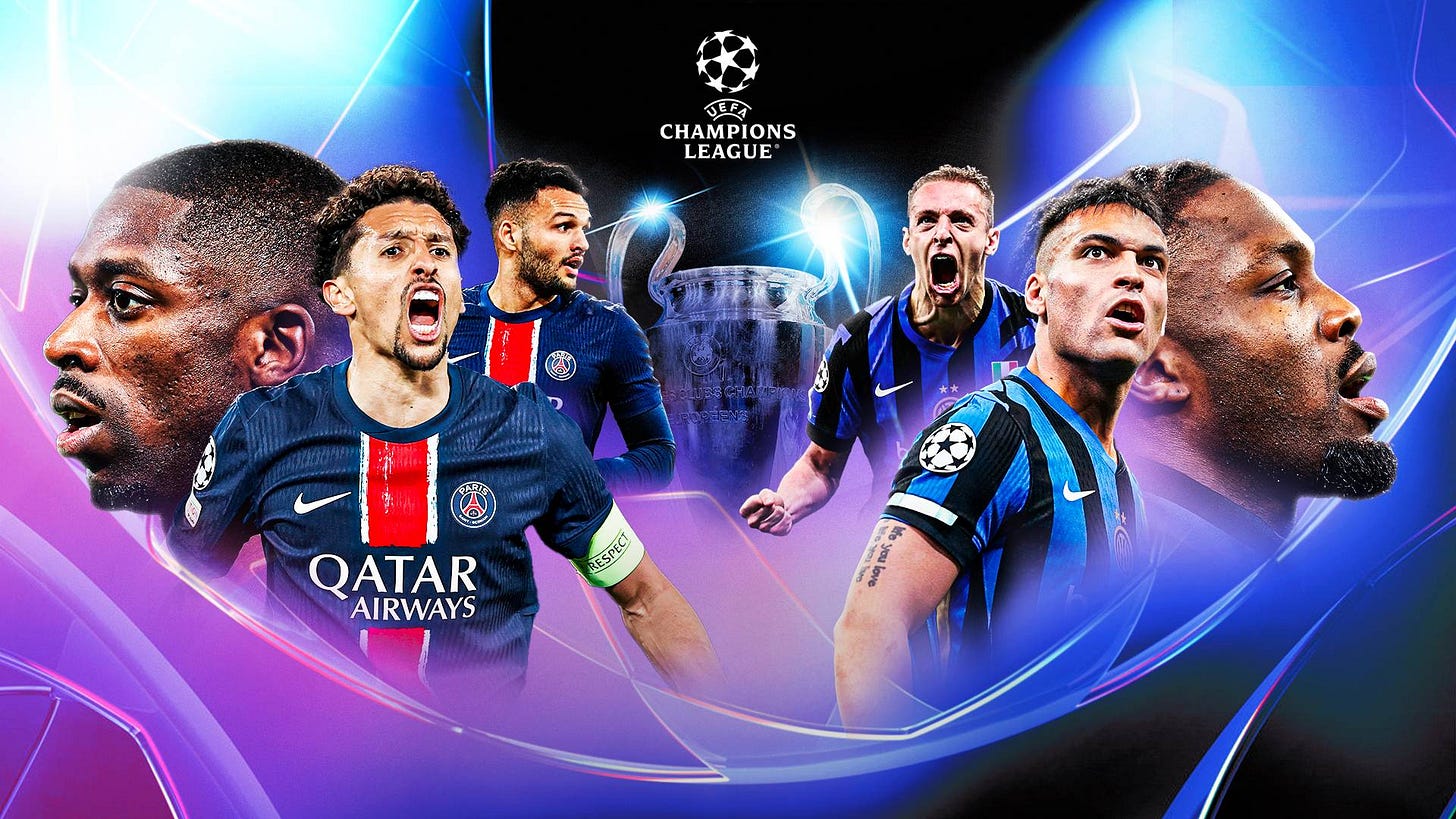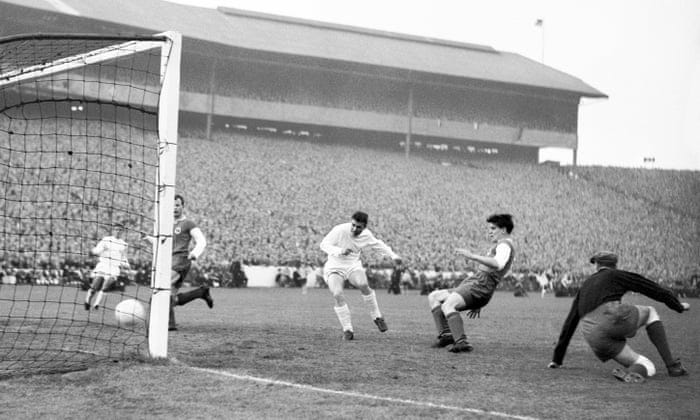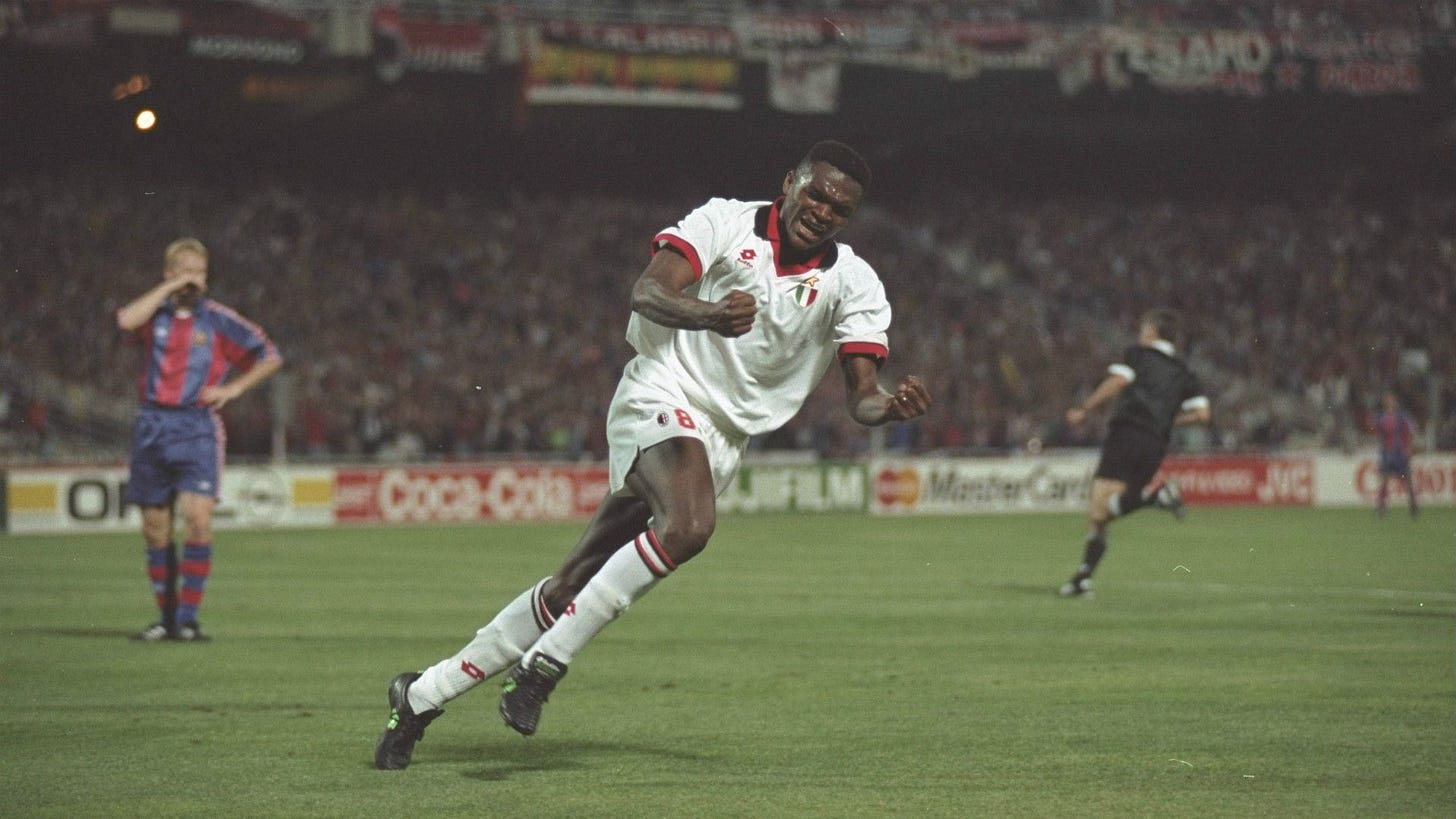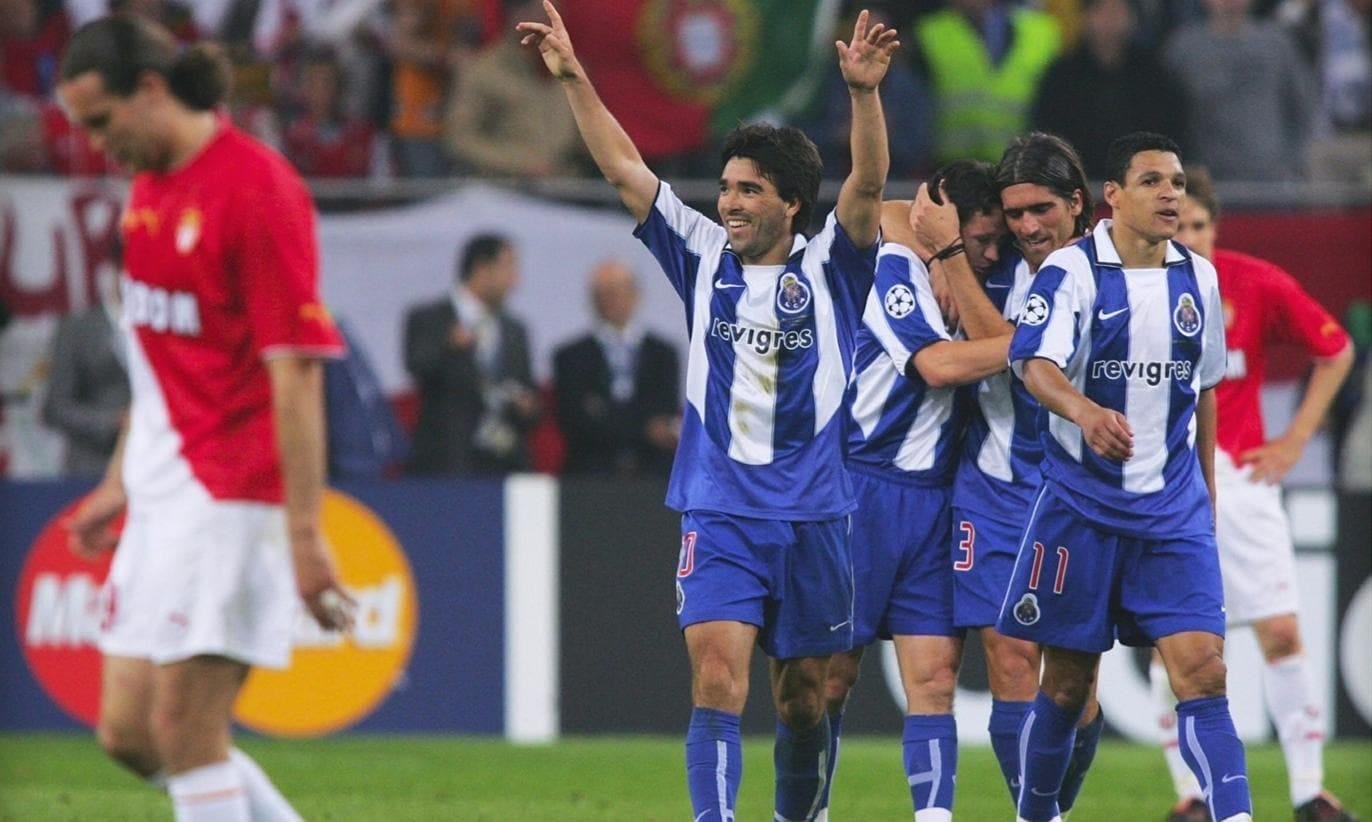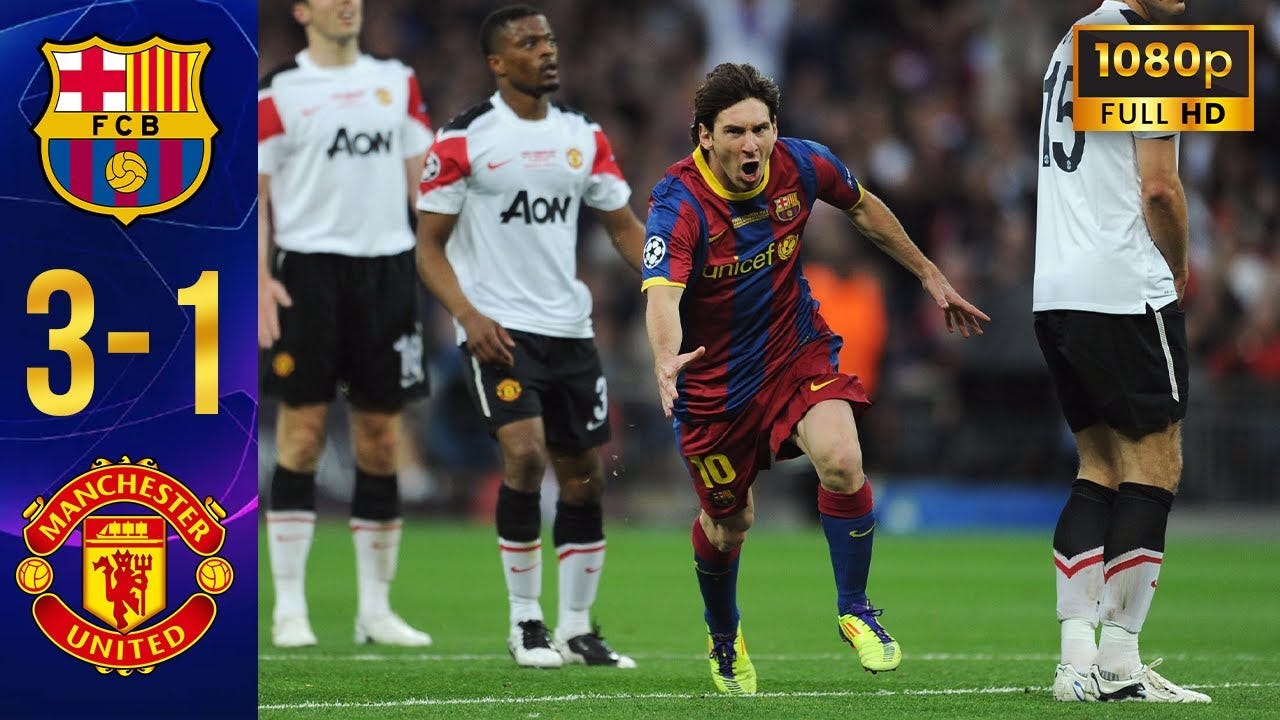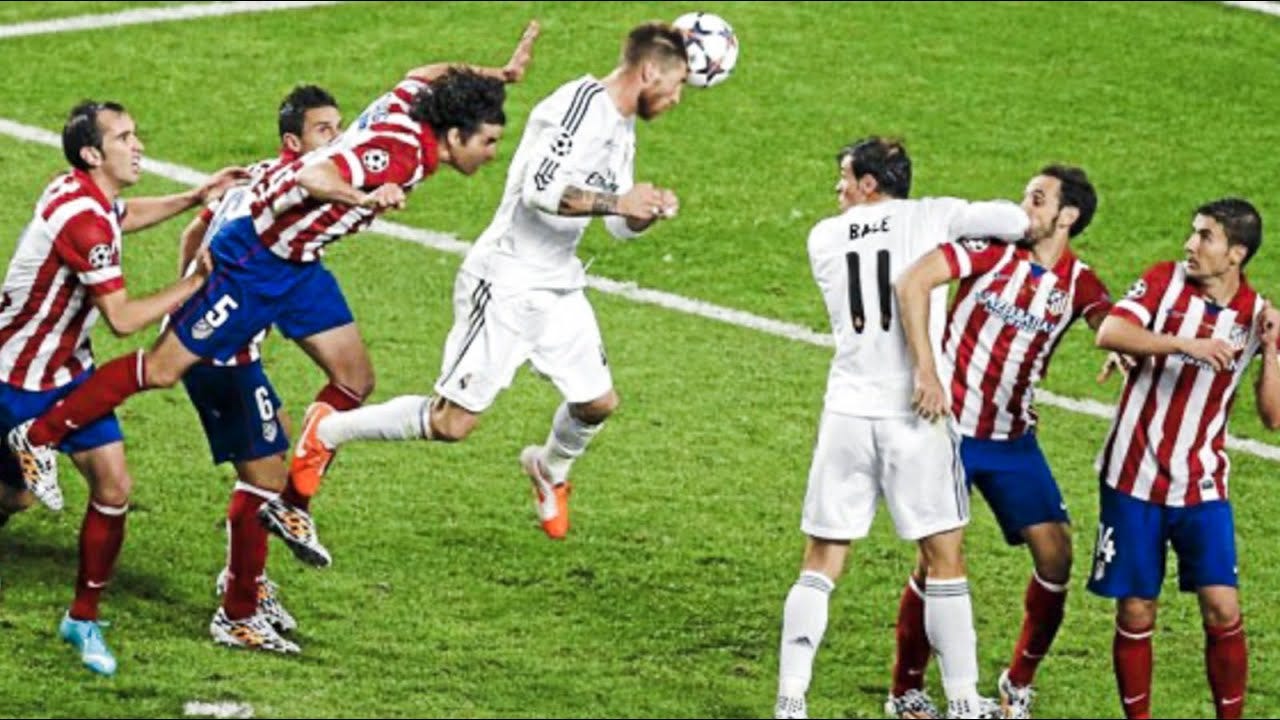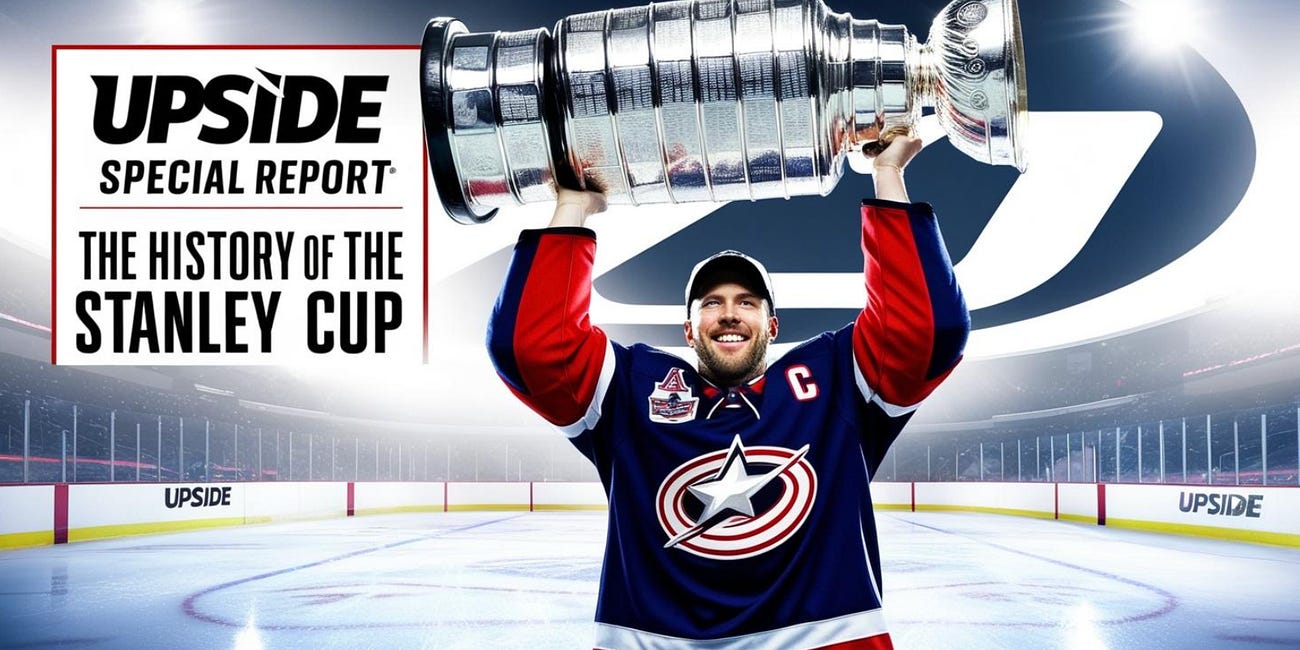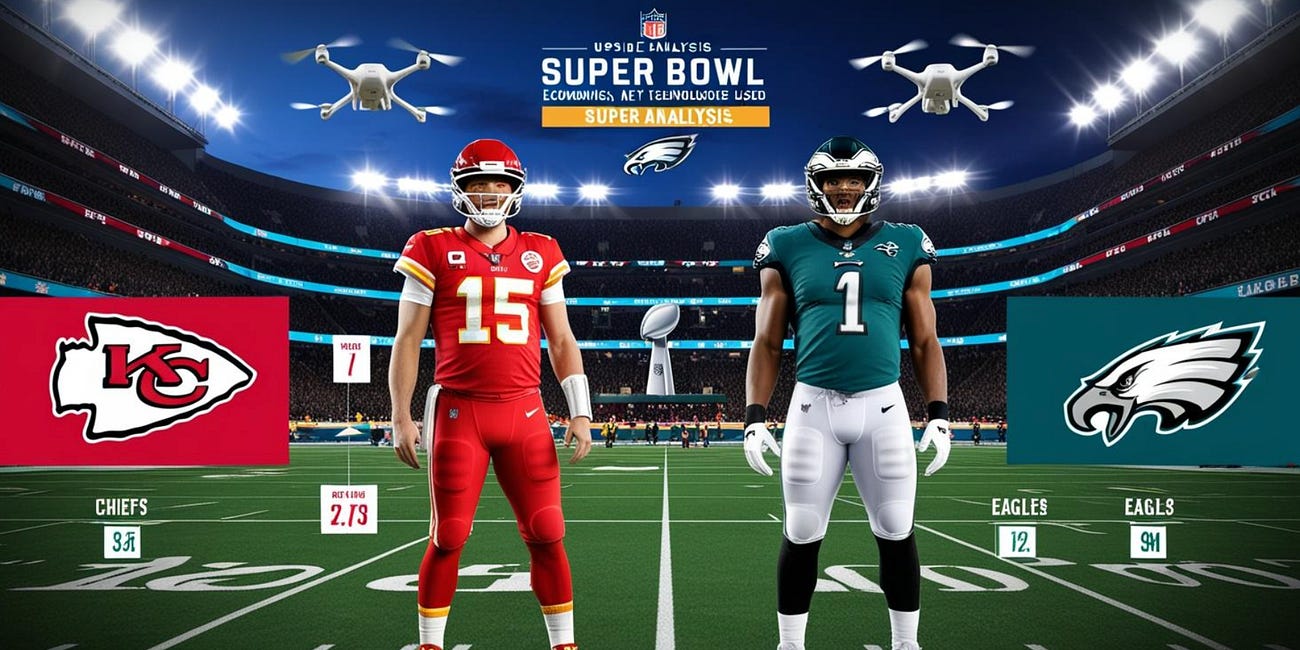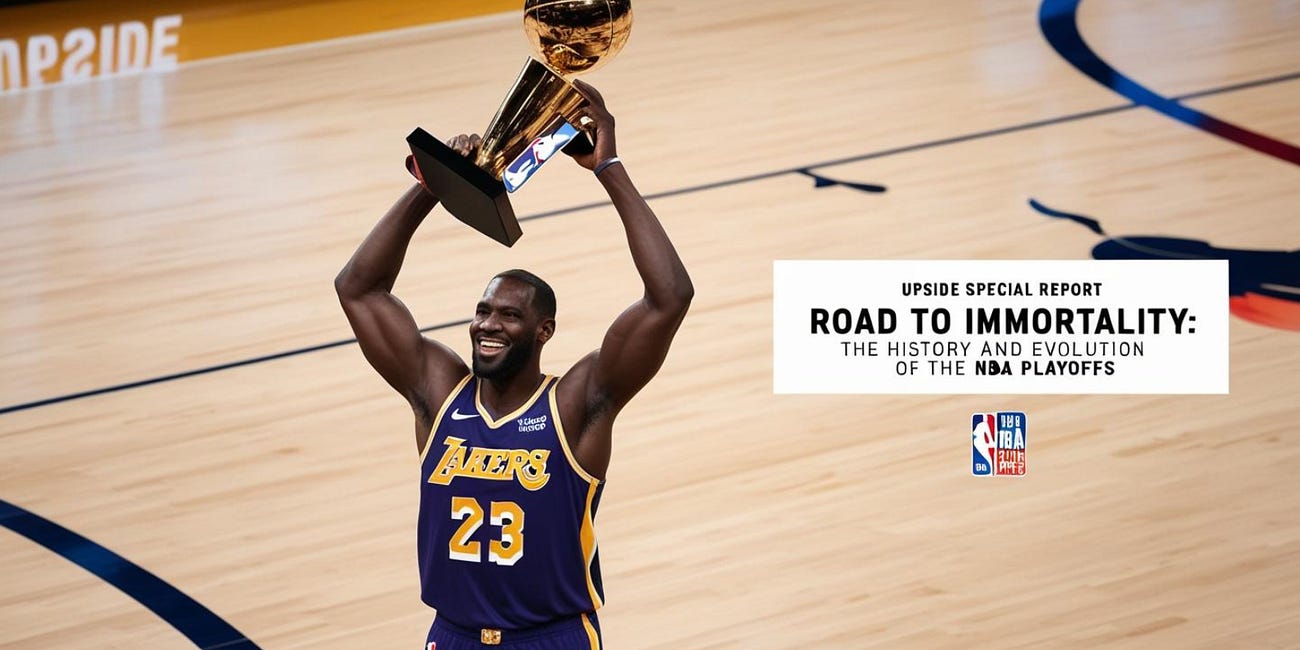🏆 ⚽ Upside Special Report: The UEFA Champions League Final: A Cultural Powerhouse, Economic Engine, and Theater of Football’s Greatest Drama
As millions of fans across continents turn their eyes to Munich tonight, the UEFA Champions League final between Paris Saint-Germain and Inter Milan becomes more than just a football match — it’s a global cultural event, a multi-billion-euro showcase of elite sport, and a clash between two footballing identities: modern ambition and historical prestige.
The Champions League is football’s most iconic and demanding stage. It has produced unforgettable moments, defined careers, fueled rivalries, and shaped the trajectory of clubs and nations. For PSG, this is a chance to crown over a decade of investment and ambition with the one trophy that continues to elude them. For Inter, it’s the opportunity to restore Italy’s elite standing and recapture the glory of their 2010 treble.
But to fully appreciate the magnitude of tonight’s final, one must understand the tournament’s rich history, tactical evolution, and global impact — from modest beginnings in the 1950s to its current role as the heartbeat of international club football.
Let’s take a deep dive into the history, iconic matches, economic dynamics, tactical revolutions, and the future of the Champions League — all leading to this unforgettable night in Munich.
🏛️ From Modest Beginnings to Global Magnificence
The UEFA Champions League — originally known as the European Cup — was established in 1955, with the idea seeded by French journalist Gabriel Hanot and brought to life by UEFA and L'Équipe. The initial structure was simple: only national champions were allowed, and the competition was purely knockout. But its aim was ambitious — to crown the true champion of Europe.
The first winner? Real Madrid, whose dominance from 1956 to 1960 (five consecutive titles) laid the foundation for their lasting prestige. The tournament grew in parallel with the post-war resurgence of Europe, symbolizing hope, continental unity, and elite sporting excellence.
By 1992, the rebrand into the UEFA Champions League reflected deeper structural and commercial changes:
The group stage was introduced.
Clubs outside of just national champions were admitted.
Television rights began to skyrocket in value.
The now-iconic Champions League anthem, inspired by Handel, was introduced.
What followed was a transformation from a football tournament into a multi-billion-euro global entertainment ecosystem — blending sport, finance, technology, and culture.
⚽️ Historic Matches That Transcended Sport
Few competitions have produced as many timeless moments. The Champions League has become the setting for redemption arcs, final farewells, tactical masterclasses, and fairytale upsets.
🟥 1960 – Real Madrid 7–3 Eintracht Frankfurt
In front of over 127,000 fans at Hampden Park, Alfredo Di Stéfano and Ferenc Puskás combined for six goals in a performance still hailed as one of the greatest team displays in football history.
🟡 1994 – AC Milan 4–0 Barcelona
Fabio Capello’s Milan delivered a tactical dismantling of Johan Cruyff’s "Dream Team" — showcasing the power of discipline, preparation, and team cohesion over flair and ego.
🧨 2004 – Porto 3–0 Monaco
A young, dynamic manager named José Mourinho shocked Europe by leading an underdog Porto team to the title — igniting a managerial career that would reshape modern tactics.
🔵🔴 2009 & 2011 – Barcelona under Guardiola
Guardiola’s "tiki-taka" philosophy was fully realized. The 2011 final win against Manchester United was so dominant that Sir Alex Ferguson admitted they were “the best team we’ve ever faced.”
🟣 2014 – Real Madrid’s La Décima
After a 12-year wait, Madrid claimed their 10th title in stunning fashion. Sergio Ramos' 93rd-minute equalizer against Atlético Madrid led to extra-time domination, sparking a modern dynasty.
🌍 The Globalization of the Champions League
The Champions League now transcends football — it’s a global entertainment product rivaling the NFL Super Bowl, NBA Finals, or the Olympic Games.
TV Viewership: Over 400 million people watch the final annually.
Social Media: The UCL generates billions of social media impressions each season. In 2023, the competition had more engagement on TikTok than the Premier League.
Geographic Impact: More fans in Nigeria, Indonesia, the U.S., and India now follow European clubs due to Champions League exposure.
UEFA has made strategic moves to globalize:
Regional partnerships with sponsors and broadcasters.
Exhibition matches, grassroots programs, and youth academies globally.
Digital streaming innovations for younger audiences.
💶 Champions League as a Financial Superpower
The Champions League is one of the world’s most lucrative sports properties:
🧾 Key Financial Stats
UEFA earned €3.6 billion in revenue from the 2022–23 competition cycle.
Over €2 billion was distributed to clubs based on performance, market pool, and coefficient rankings.
Participation alone guarantees €15–20 million, and winning the tournament can result in €100–130 million in total earnings when commercial bonuses are added.
🏙️ Economic Impact on Cities
Hosting the final generates:
€50–100 million in tourism-related revenue.
Increased hotel occupancy rates, transit usage, and food/beverage sales.
Massive global branding exposure for the host city — Berlin, Istanbul, Paris, London, Madrid, and this year’s host Munich have all benefited.
🤝 Sponsorship and Broadcasting
UEFA has long-standing deals with:
Mastercard, Heineken, Lay’s, FedEx, Expedia, Oppo, and PlayStation — leveraging a multi-continent reach.
Amazon, Paramount+, DAZN, TNT Sports, and Canal+ as modern broadcast partners embracing hybrid and digital streaming models.
The Champions League also plays a critical role in club valuations. A strong run in the tournament can:
Boost stock prices (as with Juventus and Borussia Dortmund).
Increase shirt sales and global fan acquisition.
Justify premium stadium upgrades or training facility investments.
🧠 Tactical Innovation & Coaching Legacies
UCL history is a catalog of tactical revolutions:
Rinus Michels’ Total Football (Ajax 1970s)
Arrigo Sacchi’s pressing and offside trap (Milan 1989–90)
Zidane’s rotational hybrid system at Madrid (2016–18)
Tuchel’s 3-4-2-1 and adaptive defensive shape at Chelsea (2021)
It’s also where elite managers are either validated or exposed:
Guardiola’s Champions League tenure has seen brilliance and heartbreak.
Mourinho, Klopp, Ancelotti, Simeone, and Allegri have cemented legacies or chased redemption.
For today’s managers — Luis Enrique and Simone Inzaghi — the stakes could not be higher.
⚔️ PSG vs Inter Milan – The 2025 Final: A Collision of Power and Tradition
🔵 Paris Saint-Germain: The Glamor Project Reborn
PSG have spent over €1.5 billion in transfer fees since the QSI takeover in 2011.
After heartbreak in the 2020 final, this is their chance at true validation.
Luis Enrique has infused structure, balance, and pressing discipline into a side once criticized for being overly star-driven.
Key Players:
Ousmane Dembélé - a key striker for PSG.
Vitinha & Zaïre-Emery – The heartbeat of PSG’s emerging midfield.
Donnarumma – An elite shot-stopper critical in knockout matches.
⚫ Inter Milan: Tradition, Tactics, and Triumph
Inter are chasing their fourth title (1964, 1965, 2010).
Under Simone Inzaghi, Inter have blended tactical compactness with fluid attacking interplay.
They’ve already dominated Serie A this season and boast arguably Europe’s most balanced XI.
Key Players:
Lautaro Martínez – Serie A top scorer and team leader.
Çalhanoğlu – The midfield orchestrator with elite set-piece delivery.
Bastoni & Darmian – Essential to the defensive transitions.
🧪 Technology on Football’s Biggest Stage: How Innovation Shapes the Champions League Final
The UEFA Champions League final isn’t just the pinnacle of sporting competition — it’s also a showcase of the latest technologies in elite football. From pitch-level performance tools to fan-facing broadcast innovations, the final represents the most advanced and data-rich environment in club football.
Here are the core categories of technologies used:
⚙️ 1. On-Field Performance and Tracking Technology
🛰️ Optical and Wearable Tracking (e.g., TRACAB, Second Spectrum)
Cameras and sensors around the stadium provide real-time data on every player's movement, speed, distance covered, and positioning.
UEFA uses a combination of optical tracking (via stadium cameras) and GPS-based wearable systems (typically in training and prep sessions).
Data is shared with analysts, broadcasters, and even live commentary to provide insights like "distance covered by midfielders" or "highest sprint speed."
📡 Connected Ball Technology
Since 2022, UEFA has used an Adidas match ball with a motion sensor chip embedded in its core.
It allows for ultra-precise detection of:
Touch points (who made contact with the ball last),
Shot speed,
Possession changes,
Ball in/out decisions.
This data syncs with VAR and offside technology for more accurate, faster decisions.
🎮 2. VAR & Semi-Automated Offside Technology
🎥 VAR (Video Assistant Referee)
Multi-camera angles are used to support real-time and delayed review for:
Goals
Penalty decisions
Red cards
Mistaken identity
For the final, VAR is typically managed by a dedicated elite crew trained specifically for high-pressure environments.
🦾 Semi-Automated Offside Technology (SAOT)
First used in Champions League in 2022–23, this system combines:
12 dedicated tracking cameras,
29 data points on each player (e.g., limbs),
And the connected ball chip.
It creates 3D visualizations for officials and broadcasts, reducing decision times from 70+ seconds to 25 seconds on average.
📺 3. Broadcast and Fan Experience Tech
🧠 AI-Enhanced Analytics and Storytelling
Partners like Stats Perform, Second Spectrum, and UEFA’s in-house team provide real-time AI-generated metrics:
Expected Goals (xG),
Player heatmaps,
Pressing intensity (PPDA),
Team shape transitions.
📱 Augmented Reality (AR) and Virtual Graphics
Broadcasters use AR overlays to show player comparisons, tactical breakdowns, and predicted outcomes.
Sky Sports, CBS, and DAZN integrate data visualizations into live coverage for more immersive storytelling.
📡 Multi-Cam & Personalized Viewing
Viewers can choose multiple camera angles, player POVs, and interactive timelines through platforms like UEFA.tv, Paramount+, and Amazon Prime (in select territories).
Some broadcasts now offer "tactical view" modes — similar to coaching camera angles used by analysts.
🧠 4. Behind-the-Scenes: Team Technology and Preparation
📊 Tactical Preparation Platforms
Teams like PSG and Inter Milan use advanced video analysis software (e.g., Hudl, Wyscout, SkillCorner) to study opponents.
Players are given individualized tactical videos and data reports on key duels, set pieces, and positional trends.
🧬 Physiological Monitoring & Recovery Tools
In the lead-up to the final, teams rely on:
Force plates, NordBord, and 1080 Sprint to assess neuromuscular readiness.
GPS and IMU systems for workload management.
Recovery tech like cryotherapy, BFR cuffs (e.g., SmartCuffs), and sleep tracking systems (like Whoop or Oura).
🧘 Cognitive & Mental Training
Some clubs use neurofeedback tools (e.g., Neuro11, Rewire) to enhance decision-making, focus, and mental resilience under pressure — critical in high-stakes games like a UCL final.
🌐 5. Cybersecurity and Data Infrastructure
Given the sensitivity of player data, tactics, and commercial assets, UEFA and competing clubs invest heavily in:
Data encryption and secure cloud infrastructure for storing and sharing match-day analysis.
Private performance data ecosystems where analysts and coaches collaborate with real-time sync.
Dedicated cybersecurity protocols to prevent leaks or sabotage — especially during high-profile matches like the final.
⚽️ Why Technology Matters
Technology in the Champions League final isn’t about replacing human intuition — it’s about enhancing decision-making, increasing fairness, amplifying fan engagement, and providing players and coaches with the tools to compete at the absolute peak of performance.
As the Champions League evolves into a global entertainment behemoth, tech will only deepen its role — through personalization, AI-powered strategy, immersive fan experiences, and smarter officiating.
In this sense, tonight’s PSG vs Inter final represents not just the culmination of a season — but a glimpse into the future of elite football.
📈 Looking Ahead: The New Champions League Era (2024–25 and Beyond)
Starting next season, UEFA will implement a Swiss-style league format:
36 teams, all in one pool.
Each team plays 8 different opponents (home/away decided by draw).
Top 8 go directly to Round of 16. Next 16 fight in a two-legged playoff.
Format will allow for more marquee matchups, increase broadcast revenue, and combat breakaway Super League threats.
UEFA is also expanding its Women’s Champions League, youth editions (UEFA Youth League), and considering AI-enhanced officiating tools and augmented broadcast experiences for global audiences.
🧠 Final Reflections: Why the Champions League Matters
The UEFA Champions League is more than just the best football on the planet. It is:
A geopolitical symbol of Europe’s soft power.
A business benchmark for global sports leagues.
A cultural icon watched by heads of state, kids in local academies, and sports investors alike.
A dream generator — from Istanbul to Madrid, Lagos to Rio.
Tonight’s final is more than a match. It’s the culmination of history, legacy, business, and billions of dreams. Whether PSG finally achieves its destiny or Inter Milan restores Italian pride on Europe’s biggest night — the world will be watching.
You may also like:
🏒 Upside Special Report: The History of the NHL Stanley Cup
With the Stanley Cup kicking off this weekend we thought it would be timely to write a special report on the history of the Stanley Cup. The Stanley Cup is more than just a trophy — it’s a sacred symbol of excellence, resilience, and tradition in the world of professional sports. As the ultimate prize in the
🏈 Upside Analysis: Super Bowl: Economics, Key Stats, and Technologies Used
This weekend the US is hosting one of the most popular sports events in the world: The Super Bowl (SB). So we thought it would be appropriate to put together an analysis on the Super Bowl to discuss the economics, key stats and technologies that have been adopted at the SB over the years. Read on.
🏀 Upside Special Report: Road to Immortality: The History and Evolution of the NBA Playoffs
The NBA playoffs are about to start this weekend. So we thought it was time to write a quick post about the history of the NBA playoffs.

